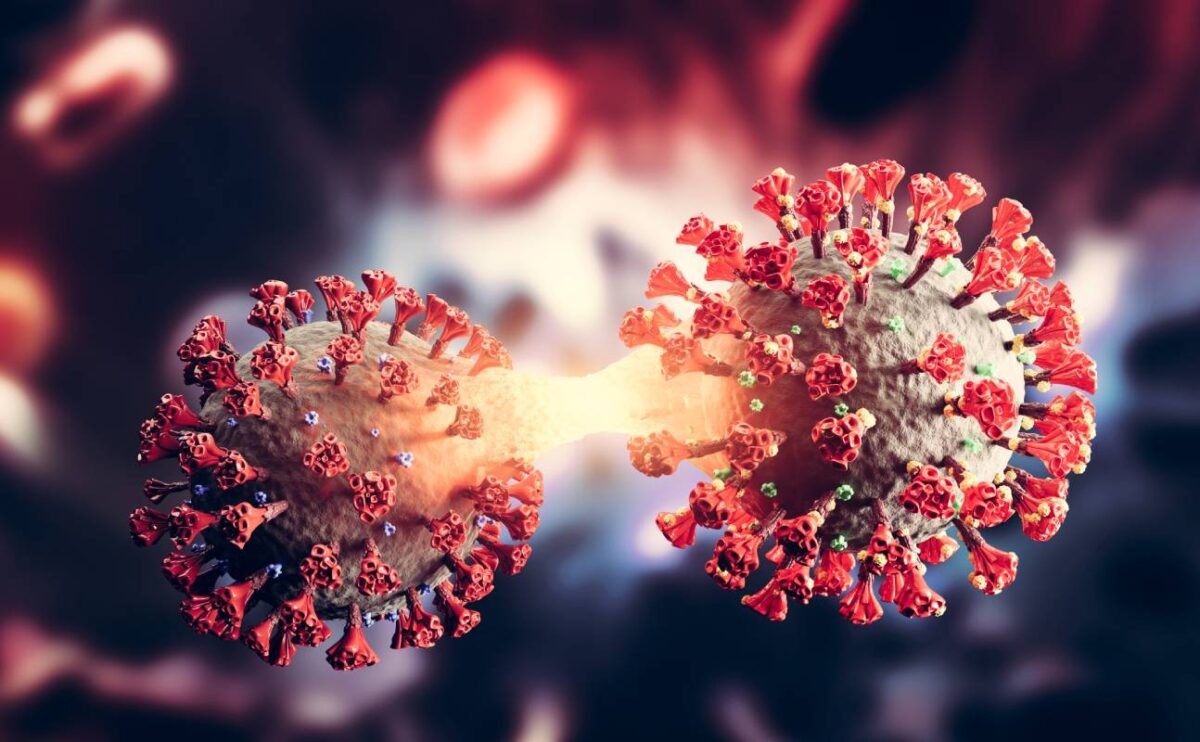Characteristics of the Current Covid Wave

The Network for Genomic Surveillance in South Africa was the first to identify the novel Omicron (BA.5) variant of SARS-CoV-2 in January of 2022. A few subvariants have since emerged, including the BA.2 and BA.4 variants, which swiftly spread across the U.S. alongside the BA.5 variant. These recent variants that are easily transmissible and better at dodging immune defenses have been the drivers of new cases in these past months. Since first starting in the spring of 2022, the current COVID-19 wave in the U.S. has, while averaging one hundred thousand of new infections daily, presented with some unique characteristics 1.
Buoyed by highly infectious variants, the current COVID-19 wave has spread easily and rapidly – even infecting individuals having previously been infected or received booster shots. The surge in cases in the winter due to Omicron was uniquely large and fast, compared to previous waves, but fortunately the percentage of people needing hospitalization was comparatively low. Cases then decreased in March, stabilizing at approximately 30,000 new cases per day that month. The current “wave” started in April and has held at a plateau of approximately 100,000 new cases per day since early May. Though these numbers were unthinkable at the beginning of the pandemic, public health agencies have largely not re-implemented restrictions, as deaths remain in the hundreds per day across the U.S. It is unclear when this holding pattern will end, as reinfections appear to be common, the virus continues to evolve, and school resumes for many kids and young adults in the next few weeks, alongside the onset of colder weather.
In general, individuals infected with the Omicron variants present with symptoms similar to those characteristic of previous variants, including fever and chills, cough, fatigue, muscle aches, headache, and loss of taste or smell, among others2. However, the symptomatology tends to be less severe than that of previous waves, accordingly linked to lower hospitalization rates 3. Similar to other COVID waves however, the elderly and immunocompromised remain more greatly at risk and should remain precautious.
Interestingly, the Omicron SARS-CoV-2 variants harbor over 60 mutations, 15 of which are located in the receptor-binding domain, the part of the spike protein that binds to cells and enables infection 4. This results in different physiological dynamics from the other variants. In particular, the Omicron variants are characterized by their remarkable ability to evade antibody-mediated immunity resulting from vaccination or previous infection from other variants 5.
In addition, the Omicron variants do not harbor a key mutation in the receptor-binding domain, L452R, which is known to facilitate fusogenicity and infectivity 6. This is thought to be key to its milder symptomatology 7. These findings also point to the strategic importance of targeting conserved epitopes in the design and development of therapeutics and vaccines.
Despite the new variants’ ability to evade immunity, individuals who have been both vaccinated and infected still retain stronger protection 8, and vaccines remain a highly effective tool against hospitalization and mortality 9. Despite the extended period of elevated case rates, mortality remains well below the tragic rates seen at the beginning of the pandemic.
In the meantime, the SARS-CoV-19 virus is likely to keep evolving new variants at a rapid pace, and, in order to minimize the impact of the current COVID wave, maintaining global surveillance is crucial, as will predicting the emergence and dynamics of recurrent and new variants through advanced modeling 10.
In addition, increased vaccine uptake in the general population, the administration of booster doses, the promotion of mask-wearing indoors and in public transportation, and the application of rigorous therapeutic protocols for those at risk of severe disease will remain critical to curbing the effects of the latest COVID-19 wave through the rest of 2022 and beyond 11.
References
1. CDC COVID Data Tracker: Home. Available at: https://covid.cdc.gov/covid-data-tracker/#datatracker-home.
2. Omicron Variant: What You Need to Know | CDC. Available at: https://www.cdc.gov/coronavirus/2019-ncov/variants/omicron-variant.html.
3. Maslo, C. et al. Characteristics and Outcomes of Hospitalized Patients in South Africa during the COVID-19 Omicron Wave Compared with Previous Waves. JAMA – Journal of the American Medical Association (2022). doi:10.1001/jama.2021.24868
4. Cui, Z. et al. Structural and functional characterizations of infectivity and immune evasion of SARS-CoV-2 Omicron. Cell (2022). doi:10.1016/j.cell.2022.01.019
5. McCallum, M. et al. Structural basis of SARS-CoV-2 Omicron immune evasion and receptor engagement. Science (80-. ). (2022). doi:10.1126/science.abn8652
6. Motozono, C. et al. SARS-CoV-2 spike L452R variant evades cellular immunity and increases infectivity. Cell Host Microbe (2021). doi:10.1016/j.chom.2021.06.006
7. Zhang, Y. et al. SARS-CoV-2 spike L452R mutation increases Omicron variant fusogenicity and infectivity as well as host glycolysis. Signal Transduction and Targeted Therapy (2022). doi:10.1038/s41392-022-00941-z
8. Khan, K. et al. Omicron sub-lineages BA.4/BA.5 escape BA.1 infection elicited neutralizing immunity. medRxiv 2022.04.29.22274477 (2022). doi:10.1101/2022.04.29.22274477
9. Omicron BA.5: What to Know About COVID-19’s Latest, More Contagious Variant | Think Global Health. Available at: https://www.thinkglobalhealth.org/article/omicron-ba5-what-know-about-covid-19s-latest-more-contagious-variant.
10. Obermeyer, F. et al. Analysis of 6.4 million SARS-CoV-2 genomes identifies mutations associated with fitness. Science (80-. ). 376, 1327–1332 (2022). doi: 10.1126/science.abm1208.
11. Rapidly escalating COVID-19 cases amid reduced virus surveillance forecasts a challenging autumn and winter in the WHO European Region. Available at: https://www.who.int/europe/news/item/19-07-2022-rapidly-escalating-covid-19-cases-amid-reduced-virus-surveillance-forecasts-a-challenging-autumn-and-winter-in-the-who-european-region.
